Nuevos horizontes en la Detección Acústica Submarina | www.elSnorkel.com
New horizons in Underwater Acoustic Detection
In this article, various underwater surveillance equipment capable of providing early warning to the command will be described.
Since the invention of ships and their use in wars, it has always been of vital importance to know the position and size of the enemy fleet. With the appearance of the submarine, it was necessary to develop novel methods capable of counteracting its effectiveness. Since electromagnetic waves (radar) are transmitted very poorly in an aqueous environment, mechanical waves (sound) were used as a means of detecting and locating these devices. So much so that for 70 years the main anti-submarine search tool has been sonar [1]. Since then, Underwater Acoustic Detection has only improved, becoming widespread in systems such as the SOSUS network or ocean surveillance ships, all of which we will discuss in the following lines.
Before beginning, it is convenient to mention the possible paths that sound can take at sea, since most of the sensors to be studied are focused on the treatment of acoustic energy.
The simplest way is known as a direct path, which occurs when the sender and receiver are close enough. Surface channel, due to the physical characteristics of the medium, the sound remains trapped in the first meters of depth. Rebounds on the bottom and on the surface, the sound propagates through the areas with the lowest speed of acoustic propagation, therefore, when it reaches the extremes, it is refracted or reflected and returns to the sea. Convergence zone, when the acoustic rays are concentrated on the surface. Deep sound channel or SOFAR channel, occurs when there is a space in which the speed of acoustic propagation is minimal, so the acoustic rays are confined inside. Reliable acoustic path,This channel forms a special type of direct path that extends up the water surface from a point below the critical depth in the sea. Finally, to soften the paragraph, an image is attached in which the aforementioned concepts are reflected [2]:
![Illustration 1 – Acoustic propagation models [2]. Illustration 1 – Acoustic propagation models [2].](https://blogger.googleusercontent.com/img/b/R29vZ2xl/AVvXsEiVikzYqvp6XGeHTwKWT7zp3_DehHSH8XanSH498WbULar5qs51RYPEWcfT_sJp6p8zfR1tCNy6corFtJJsjg501Q8Tob8KFJi5Kl3vqLwEMsazA5Y7VPduNW0b9JdduN2xb_pjWuCXreJDZMDsa4irw4MVlrk1-Bzgq0uqSoVUQ610wFUD2w/w640-h284/Ilustraci%C3%B3n%201%20%E2%80%93%20Modelos%20de%20propagaci%C3%B3n%20ac%C3%BAstica%20%5B2%5D..webp) |
| Illustration 1 – Acoustic propagation models [2]. |
In this article, various underwater surveillance equipment capable of providing early warning to the command will be analyzed. These devices can be mobile or fixed and take advantage of the different possible acoustic paths such as the deep sound channel or direct path propagation. In addition, from a military point of view, they become strategically important since a system of these characteristics would detect SSBN submarines [3, 4, 5].
Figure 2 – Average sound speed profiles for different parallels along the 150ºW meridian in the Pacific Ocean. Note that the profiles converge at great depth since the temperature is practically uniform at a certain depth regardless of latitude. Source: dosits.org.
Although, initially, these systems were used to defend important ports, as will be seen later, years later they were placed in straits or strategic enclaves to find out if a submarine or other type of ship had accessed a certain body of water. Complying with what is stated in point 5 of the US concept of operations known as full spectrum anti-submarine warfare (Full Spectrum ASW) [6]. Thus, the need to have a naval group continuously following a submarine is also avoided, reducing possible political tensions [7]. So to speak, it would be to establish a lax control over the submarine, since at any moment the allied forces would be able to locate it, since they have the information sent by the sensors.
Currently, due to the proliferation of a large number of submarines and these increasingly silent, work is being done on the introduction of deployable systems in situ and mobile, taking advantage of new technologies. As a curiosity, the first port defenses considered the use of nets for catfish fishing [8]:
Illustration 3 – Operation of anti-submarine barriers [8].
Before beginning, a classification will be established to serve as a guide. In this way, it is possible to differentiate between fixed systems (Fixed Surveillance System), such as SOSUS (Sound Surveillance System); mobile (Mobile Surveillance System), such as SURTASS (Surveillance Towed Array Sensor System) installed on T-AGOS (Tactical Auxiliary General Oceanographic Surveillance) ships, or deployable (Deployable Surveillance System). The latter are more recent and, therefore, less mature [2].
In addition, the introduction of decision support algorithms such as Acoustic Automated Processing (AAP) should be taken into account, aimed at providing a subsystem capable of automating signature recognition processes and thus being able to provide early warning capabilities through sensors. Fixed Surveillance System (FSS) [9]. This development is based on the Blue Line of Effort (LOE) Strengthen Navy Power at and from the Sea from the document published by the US AJEMA (Chief of Naval Operations, CNO): Design for Maintaining Maritime Superiority [10].
Changing the third a bit, it is also important to analyze the survival of these sensors in the event of a conflict. As expected, although the centralized systems and the fixed parts of the distributed ones are strategically located sheltered from the depths [1, 2], there are nations with powerful capabilities to degrade them [11, 12], either listening to the cables [13 ] (Operation Ivy Bells [14, 15]) or by destroying part or all of the facility [16], as has recently occurred with the Nord Stream 1 and 2 gas pipelines [17]. In this specific case, the gas pipelines were out of service, so the connotations are less than the attack on an IUSS (Integrated Undersea Surveillance System) network station, which could occur during a process of vertical scaling [18] between the Russian Federation and BORN.
In the first case (monitoring of submarine cables) it is probable that there will be no evidence of the possible intervention of the system until an inspection of the area is carried out. This can be mitigated with a correct encryption of the information. For its part, the destruction of the cables requires the presence of a specialized ship, normally civilian, the cost of which is very high and the repair time relatively high [19, 20, 21]. For this reason, everything related to this type of system must be carried out with the greatest of secrets [2].
Illustration 4 – Submarine station prototype for the collection of a UUV [22].
As expected, although they are not the main reason for the article, it will also be important to take into account underwater drones, since they are called to work in collaboration with fixed systems. Likewise, it should be noted that it will be increasingly difficult to establish a robust discriminant between the definitions of vehicle and sensor [7].
As mentioned in the previous article on underwater drones, depending on the length at which you want to detect, you will work on some frequencies or others.
Since it is somewhat complex to carry out an exhaustive study of each and every one of the projects and it is not the purpose of this article to scare the reader with all of them, the most important ones will be collected. Per custom, you will start with American systems, move on to European, Japanese, Indian, and Australian systems, and end with Russian and Chinese.
Illustration 5 – Noise level and frequency for the sounds that populate the domains of Poseidon. Source: Seiche.com.
Western Acoustic Surveillance Systems
Already during the First World War, the first hydrophone chains were installed, mainly made up of telephone receivers capable of withstanding water pressures. These rudiments were designed to work with sound waves transmitted through the air, so their success was due to the enormous noise emitted by the submarines of the time [18].
For example, they were placed on the island of Hyères (France) just in front of the entrance to the most important base of the French navy in the Mediterranean, Toulon [23, 24, 25]. In fact, the first to work with active sonar was the renowned French physicist Paul Langevin [26].
Years later, during World War II, their use spread and they began to be used both on ships and at fixed stations. The British coined the term ASDIC (Anti-Submarine Detection Investigation Committee), while the Americans preferred the more widely used SONAR (Sound Navigation and Ranging) [18].
For example, the British used it in combination with magnetometers arranged on the seabed for the protection of important ports such as Haifa [27]. Likewise, it is believed that it was also used in Gibraltar against the raids of the Tenth Flotilla MAS (Mezzi d'Asalto) of the Regia Marina [28]. All these systems were mainly short-range and focused on the detection of enemy submarines approaching allied ports [1]. In fact, in that war, the main means to search for submarines were sight and radar [29], where an interesting race took place between the improvement of the transmitting antennas (by the Allies) and the ESM receivers (by the German side). ).
Illustration 6 – Soviet sailors friendly salute a Lockheed P2V Neptune flying over a non-allied submarine [30].
During the Cold War, anti-submarine warfare reached its heyday, as the Union of Soviet Socialist Republics (USSR) was a power whose foundation was found in denying the adversary the sea (the Russian Federation continues to resort to this) using to this heavily armed surface ships and submarines [31]. Fearing that the latter would have a large radius of action (thanks to the introduction of induction masts and, later, nuclear propulsion) and could compromise the maritime communication lines between the United States and Europe [32], the American country was forced to develop an innovative system for listening to submarines throughout the world. Known as SOSUS (Sound Surveillance System, its initially declassified name was CAESAR [33, 34]) [35],
This sensor network, put into operation for the first time in 1961 and made up of fixed hydrophones [39], made it possible to set up an early warning mesh (thanks to its enormous range) for the US Navy, which at that time included police plans. maritime, ships and submarines [1]. In this way, every time a station (located in its own or allied territory) detected the possible noise of a submarine, the alarm crew was immediately launched (at that time, the P3 also provided alarm service) and was ordered to scan the area for the possible ghost [40].
Illustration 7 – Acoustic propagation in the SOFAR channel. The sound waves that emanate from a source are refracted towards the region of lower propagation speed, confining the sound in the mentioned channel. Source: Paul Webb (Roger Williams University).
This technology is based on the use of the Deep Sound Channel (DSC) [1] independently discovered by Columbia University researchers Maurice Erwig and J. Lamar Worzel [41], and Leonid Brekhovskikh at the Lebedev Institute of Physics [42] during the 1940s. This channel is between 700 and 1,300 meters deep and is characterized by trapping sound waves inside, thus acting as a waveguide. Also known as SOFAR channel (Sound Fixing and Ranging Channel) [43].
By acting as a waveguide, the propagation is cylindrical so there are only losses in the plane, unlike spherical propagation [44]. The use of the ocean as a giant waveguide whose limits are the seabed and the sea surface is still valid thanks to the OAWRS (Ocean Acoustic Waveguide Remote Sensing) [45] and POAWRS (Passive Ocean Acoustic Waveguide Remote Sensing) techniques. [46].
Illustration 8 – Atlantic coverage of the SOSUS system between the years 1958 and 1978 [47].
Likewise, the development by Bell Laboratories of the LOFAR analysis (Low Frequency Analysis and Recording) allowed both the representation of the acoustic signal collected in the lofargrams (adapted from an acoustic spectrogram) and the analysis of the low frequency part. of the signal, indicating which frequencies were present [33, 35].
Illustration 9 – Map made by the USSR about its conception of the US SOSUS system. Source: Michael Flicker.
Due to the information leaked by the spy John Walker to the Soviet Union and to that already collected by them [48], the engineers of the communist country worked overtime during the 70's to bring their submarines up to the level of the American ones. In this way, in 1979 they finished the first submarine with an appropriate isolation system and, in 1984, they had already introduced the first two classes of submarines capable of avoiding SOSUS stations [47, 49].
This caused the US Navy to investigate new lines for the early detection of Soviet submarines [1], since they had lost part of the advantage they had thanks to the SOSUS system. On the one hand, the commissioning of oceanographic research vessels equipped with a hydrophone array called Surveillance Towed Array Sensor System (SURTASS) [50] as well as the installation of a new hydrophone system called Fixed Deployable System (FDS) [51 ], based on the acoustic propagation mode known as Reliable Acoustic Path (RAP). Where a receiver located at or below the critical depth can detect acoustic sources from shallow to moderate ranges regardless of near-surface water conditions or interaction with the seafloor [52].
That is, instead of using the deep sound channel, he resorted to what is known as a direct path [51]. Thus each sensor covered a small cone of the oceanic column. Therefore, the aforementioned FDS is another example of Fixed Surveillance Systems (FSS). Between 1993 and 1996 only two FDS arrays were built and deployed due to reduced funding after the end of the Cold War. Each costing one billion dollars in 1994. Developments of these systems beyond 1996 are classified [2].
However, Cote mentions two systems whose objective is to achieve a wide area search capability in the littoral environment [51]. The first is called Advanced Deployable System (ADS) [33], while the second is called Distant Thunder. The ADS system is a passive array located on the ocean floor that can be deployed by a surface vessel. As in its predecessor, the FDS program, the acoustic sensors were pointed upwards taking advantage of the Reliable Acoustic Path (RAP) mode [52]. For its part, Distant Thunder is a signal processor attached to existing anti-submarine combat systems capable of significantly reducing acoustic noise.
The combination of fixed systems (FSS) both SOSUS and FDS with mobile systems (MSS) make up the core of the current capabilities of the American system IUSS (Integrated Underwater Surveillance System) [2].
In addition, according to Sutton, in the 80s, Canada and the United States began an interesting project called Spinnaker, in honor of the scientists who collaborated on it. This program, similar to the previously mentioned SOSUS network, was intended to listen to Soviet submarines under the arctic ice sheet in northern Canada, where they were believed to be hiding. In order to install the sensors and extend the cable, the largest autonomous anti-submarine vehicle to date had to be designed: the Theseus AUV [53].
Once the fixed systems have been explained, we proceed with the drop-down ones. The vast majority of them are still in development and are part of initiatives led by agencies such as the Defense Advanced Research Projects Agency (DARPA), Office of Naval Research (ONR), Naval Undersea Warfare Center (NUWC), among others. Proposed schemes include deployable underwater sensors, networked distributed sensors, underwater navigation and communication networks, as well as autonomous vehicles with underwater sensors and communication equipment or underwater constellations.
They can be classified into five main categories [2]: Shallow Water Surveillance Systems (SWSS), Deep Sea Passive Surveillance (DWP) Systems, Deep Sea Active Surveillance (DWA) Systems, and Mobile Active/Passive Systems (MPAS). ).
Among the former are the aforementioned Advanced Deployable System (ADS) or WQR-5, the Autonomous Off-Board Surveillance Sensor (AOSS), the Deployable Autonomous Distributed System (DADS), Seaweb [54, 55] and Persistent Littoral Undersea Surveillance Network (PLUSNet) [56].
Regarding deep-water passive systems, there are: Reliable Acoustic Path Vertical Linear Array (RAP VLA), Transformational Reliable Acoustic Path System (TRAPS) and Deep Reliable Acoustic Path Exploitation System (DRAPES). As can be seen, all of them are based on taking advantage of the reliable acoustic path (RAP) [52], which indicates a transition from the mythical SOFAR channel to this one. Finally, an active one is included, the Deep Water Active Distributed System (DWADS), optimized for detections in the convergence zone.
Illustration 10 – Graphical representation of the capacity of the DASH system based on RAP propagation. Source: Darpa.mil
In last place are mobile active/passive systems (MPAS) among which stand out: Submarine Hold at Risk (SHARK) and Sensor Hosted in Autonomous Remote Craft (SHARC).
It is worth mentioning that both the TRAPS and SHARK programs were initially developed within the framework of a DARPA (Defense Advanced Research Projects Agency) program known as DASH (Distributed Agile Submarine Hunting), released in 2013 [2, 57].
Finally, the Office of Naval Research (ONR) is developing a Deployable Family of Systems (DFoS) [58] focused on the use of affordable solutions for flexible and responsive wide-area surveillance, including related DWA, DWP and MPAS systems [2]. The initial phase of such a program was announced in February 2020 [59].
In this way, it is consolidated and based on the prototypes of systems that have been developed by US R&D programs in the last two decades. In principle, according to the US Navy budget for 2021, DWP systems will enter full-scale production (FRP) in fiscal year 2023, while prototyping of DWA systems will begin in the following fiscal year [60]. However, in the 2022 document, the acquisition of DWA and MPAS systems was removed, and the number of Spiral 1.1 DWP nodes to be acquired was reduced [61].
Having concluded the mention of the systems that are currently used and being developed in the United States, we will move on to those of Northern Europe. Like the North American country, these countries have to face the threatening presence of Russian (formerly Soviet) naval units in their vicinity. Sometimes too close.
During the writing of this document, information has been found from both Norway and Finland, which have submarine systems for various purposes. In the specific case of Norway, they have the Lofoten-Vesterolen (LoVe) underwater observatory commissioned in August 2020 and operated by the Marine Research Institute (IMR) [62].
Illustration 11 – Map of the LoVe system installed on the Norwegian coast. On the right a wiring diagram of the same. Source: LoVe Underwater Observatory.
It is made up of a network of both acoustic and optical sensors for the detection of mammals and other living beings. It became popularly famous after the mysterious breakdown it suffered in 2021 [63], when, among other damages, part of the installation's wiring disappeared. It is convenient to mention that the Norwegian Defense Research Agency (FFI) itself recognizes that the data collected by this system is filtered and pre-processed before sending it to the Marine Research Institute, eliminating, if necessary, the records that have been able to leave the submarines or military ships that transited through the area [64].
Finland, on the other hand, has had underwater surveillance systems since the 1970s to protect its coasts [65, 66]. The latest iteration is the SURA (Rapidly Deployable Underwater Surveillance System) system. Its development program began in 1990 and the first demonstrations with sonobuoys took place in 2003 [67]. From these experiments it emerged that modifying existing equipment was not the right path. Therefore, the company Patria Advanced Solutions was hired to develop a demonstrator [68].
Although the primary function of the system is passive detection, experiments were carried out to make it active in a multi-static configuration to deal with very silent threats [69]. Its definitive demonstration was carried out in 2006 and it began to complement the fixed surveillance network at the end of 2010. It is made up of a variable number of sensors, a fiber optic connection and a data analysis and presentation system [65].
It is unknown if this system was responsible for detecting a suspicious object in 2015 [70] or the fixed antennas (Passive Fixed Array) that the Finnish navy had already had since the mid-2000s. Said object was detected by launching of hand grenades [65]. Likewise, within the framework of this project, the introduction of non-acoustic sensors for the protection of port facilities was also investigated [71].
Despite the fact that the countries that make up the European Union are somewhat relaxed in the anti-submarine field, there are some recent proposals. On the one hand, the RACUN (Robust Acoustic Communications in Underwater Networks) project funded by the European Defense Agency (EDA) focused on the development of underwater communications [72] and the USSPS (Unmanned Semi-fixed Sea Platforms for Maritime Surveillance) project. [73]. In addition, the most advanced country in this matter, France, presented to the public in February of this year the Ministerial Strategy for the Management of the Seabed [74, 75]. On the other hand, there are the initiatives developed in the CEMR of La Spezia and the National Underwater Pole of the Italian nation.
In recent years, the Indo-Pacific is gaining importance, mainly due to the rise of China. For this reason, special attention should be paid to this area. As expected, neighboring countries are beginning to invest in this type of system to control possible visits by attack and strategic submarines near their waters, as well as surface ships that could compromise security.
An example may be the incident that took place on September 8 when the Chinese intelligence gathering vessel Yuan Wang 5 was intercepted by the Indonesian navy vessel 641 KRI Clurit near the island of Tunda. Consequently, the Indonesian authorities warned the raider that he was violating the United Nations Convention on the Law of the Sea and therefore expelled him [76].
Illustration 12 – Chinese intelligence ship Yuan Wang 5. Source: mod.gov.cn
In this way, India already dropped in 2015 its interest in participating in the joint project developed by the United States and Japan called Fish-Hook [77] whose purpose is none other than to monitor the submarine activity of the People's Liberation Army Navy. China in both the South China Sea and the Indian Ocean Basin. It is worth mentioning China's interest in the Maritime Silk Road that runs through the Indian Ocean region, affecting India [3], as well as the presence of Chinese submarines confirmed by the country itself [78]. .
However, joining the Fish-Hook project has some drawbacks. On the one hand, the possible response of the communist country to the installation of underwater sensors near the Andaman and Nicobar Islands [79, 80], as well as the presence of foreign soldiers in India with access to the sensitive information that these systems could collect [ 77]. Despite this, in map 4 of the book The Tools of Owatatsuni (see Illustration 15) it can be seen how the US Fish-Hook barrier reaches the mentioned islands [81].
In addition, India was forced in both 2018 and 2019 to detain Chinese surveillance and research vessels that entered its exclusive economic area and continental shelf without its permission, claiming that they served the interests of the global scientific community [82]. As the author relates, it is not the first time that Beijing has used civilian ships to obtain extremely important data on the behavior of the oceans, essential for anti-submarine warfare. In this way, Gokhale defends, the ability to monitor and prevent all those research vessels from entering the Indian EEZ is necessary.
Illustration 13 – Structure of the Underwater Domain Awareness concept [83].
This implies the definition of the Underwater Domain Awareness (UDA) strategy [84]. The purpose of this strategy is to avoid both the presence of underwater gliding drones (it has already happened in Indonesian waters [85]) and other potential underwater threats that may affect the sea lines of communication (SLOCs) [83, 86, 87]. Although, a priori, one could think of a combination between fixed and mobile stations, the chief admiral of the Indian Navy staff does not indicate the need for fixed stations but rather to introduce 4 classes of remotely manned underwater vehicles capable of working in school [80, 84].
Illustration 14 – Area of maritime interest for Australia [2]:
Similarly, Australia also defines an Undersea Domain Awareness (UDA) concept [2] with the aim of defending the underwater area. A mission included in the 2020 Force Structure Plan, which specifies the need to keep the interests of the nation safe in the maritime domain [88].
Thus, last year Australia issued a request for information (RFI) [89] within the framework of the Project SEA 5012 Phase 1 program whose purpose is the acquisition of an Integrated Undersea Surveillance (IUS) system that increases the capabilities of the Command of Theater of Submarine Warfare. This system, which will enter service in 2025 [90], will be made up of deployable autonomous vehicles and fixed or mobile acoustic equipment [89].
For its part, Japan, like other nations, began to investigate hydrophones at the end of the First World War [81]. They experimented with foreign models, although they were unable to get a working copy. However, in the early 1930s they managed to install the first hydrophones both on ships and on the seabed, models 93 and 0, respectively. These devices were based on the American MV hydrophone. Both during the war and afterward, the Japanese continued to develop their capabilities in underwater acoustics.
Likewise, the country of Japan has a significant number of SOSUS stations in its territory that make up a barrier known as the Fish Hook Undersea Defense Line and that runs from the Tsushima and Kyushu straits to the Indian Ocean, as can be seen on the following map [ 81]:
Illustration 15 – US submarine defense barrier called Fish Hook [81].
Specifically, as indicated in the same book, it has thirty chains of passive hydrophones connected to 14 or more analysis stations. Although at the beginning, this defense system was conceived for the defense of port facilities, its capabilities were expanded to obtain information from the ships that circulate through the straits and nearby waters. The installed systems receive the names LQO-3A and LQO-4. Finally, it should be noted that it also has magnetic sensors in addition to acoustic ones and an important complex for signal analysis.
Once the Western fixed surveillance systems have been presented, the oceanographic research vessels or mobile surveillance systems (Mobile Surveillance System) will be analysed. These platforms became especially important once the Soviet submarines managed to overcome the SOSUS system. Thus, these ships were deployed in the areas of operations with the idea of expanding the detection area and not being limited to the range provided by fixed antennas on the seabed.
However, they are still auxiliary ships without weapons to defend themselves and with the imposition of sailing slowly and in a straight line to avoid problems when receiving acoustic waves [1]. This last problem can be mitigated by estimating the shape of the towed sonar (Towed Array Shape Estimation) [91]. Last year Canada and the firm ULTRA launched a joint research program in which they would address this line [92].
Although these ships are very expensive, both the United States and Japan have their respective classes. On the one hand, the US Navy has five units in its inventory, four of them belonging to the Victorious class and a fifth to the Impeccable class. Initially, it was thought to build 6 ships of this class but they were cancelled. Those of the Victorious class are: T-AGOS-19 USNS Victorious, T-AGOS-20 USNS Able, T-AGOS-21 USNS Effective and T-AGOS-22 USNS Loyal [93]. While the lone Impeccable class is the T-AGOS 23 USNS Impeccable [94]. Before continuing, it is necessary to decipher the acronym T-AGOS that hides the Tactical Auxiliary General Ocean Surveillance [95]. They are all operated by the Military Sealift Command's Special Mission Command [96].
Illustration 16 – USNS Effective (T-AGOS 21) of the Victorious class in dry dock in Yokosuka (Japan). Note the peculiar shape of the bottom of SWATH ships, as well as the stabilizers in the bow, in the internal part of the catamaran.
Like the rest of the vessels in this negotiation, they are of the catamaran type with a reduced flotation surface following the concept invented by the Canadian Frederick G. Creed in 1938 and called in English Small Waterplane Area Twin Hull (SWATH). This concept manages to reduce the movement of the boat caused by the waves thanks to the fact that it places part of the buoyancy necessary to keep the boat afloat below the waterline, unlike other vessels that have all the buoyancy on the surface of the water. . The structures that provide buoyancy underwater are connected to the rest of the hull by means of a vertical structure, as can be seen in the different images that accompany the text [97].
Illustration 17 – 3D model of a SWATH structure [97].
Returning to the US ships, the first four have a length of 70 meters, a beam of 30 meters and a displacement of 3,384 tons [96]. While the USNS Impeccable has a length of 86 meters, a beam of 30 meters and a displacement somewhat higher than its predecessors, reaching up to 5,370 tons [96].
Illustration 18 – Scheme of the SURTASS system. Source: NOAA.
All of them have the powerful AN/UQQ-2 SURTASS LFA (Surveillance Towed Array Sensor System Low Frequency Active) system [98]. Development of this system began in 1973, reaching initial operational capability in November 1984. The original towed sonar consisted of a passive linear array of about 1600 m. It is capable of operating at speeds between 3 and 10 knots, at depths of 150 to 460 m [2].
Between the late 1980s and early 1990s, the US Navy began working on the development of a low-frequency active system to complement passive sonar (Artemis Program). In 2004 sea trials were carried out aboard the USNS Impeccable [99], and between 2004 and 2006 it entered service [2]. Years later, in 2016, a smaller version called Compact Low Frequency Array (CLFA) entered service.
Currently, the United States is defining the capabilities of a future substitute under the T-AGOS (X) or T-AGOS-25 program [100]. This new series of seven ships (replaces 5) will maintain the SWATH design, but will considerably increase in size, reaching 8,500 tons of displacement.
In addition, between 2017 and 2019, an expeditionary SURTASS system known as SURTASS-E was developed to be able to use it on ships of opportunity (Vessels of Opportunity, VOO) and thus increase the number of ships with oceanographic surveillance capacity [2].
On the other hand, the Japan Maritime Self-Defense Forces has three ships of this type. All three were built at the Tamano shipyard by Mitsui Engineering & Shipbuilding. They have a length of 67 meters, a beam of 30 meters and a maximum displacement of 3,800 tons. The first two, AOS-501 Hibiki and AOS-502 Harima, were built between 1989 and 1991, entering service in 1991 and 1992, respectively [101].
The last one took a little longer, since its construction was approved in 2017 and began in 2019, entering service on March 4, 2021 as AOS-5203 Aki. They all serve in the Oceanographic Command / Anti-Submarine Support Group, in the 1st Acoustic Measurement Corps at the Kure naval base and have the same system as the Americans, the AN/UQQ-2 SURTASS LFA [101].
To a lesser extent, as the systems are not comparable to those mentioned above, some NATO countries have also developed low-frequency active towed sonars. Among them, France stands out with the SLASM (Système de Lutte Anti Sous-marine) equipment developed by the Marine Nationale and introduced in the D610 Tourville class and D612 De Grasse class frigates [102].
Illustration 19 – Hibiki class ship. Source: wikipedia.org.
Russian Acoustic Surveillance Systems
Unlike the United States, there is little public information about an equivalent to the SOSUS acoustic surveillance system. For his part, Daniel Ford in his book The Button, stated that "the Soviets did not have comparable technology capable of carrying out tracking in the open ocean of American submarines" [18]. Despite this, in 1978 a piece of a Soviet-made hydrophone appeared. Although it is true that it was not known whether it came from an onshore installation or from a ship [103].
These hypotheses proposed by Ford are confirmed by the reports written in 1972 by the Central Intelligence Agency (CIA) [104] and in 1974 by the Defense Intelligence Agency (DIA) [105]. Both documents include the existence of short-range acoustic surveillance systems located mainly in strategic straits. They had a reduced range, worked passively, and were introduced in the 1960s. The Soviets saw non-acoustic systems as a way to obtain long-range surveillance at sea, which is why they worked hard on their development.
Similarly, Ford argues that the Soviet Union would, quite predictably, base its efforts on surface ships, submarines, and sonobuoys launched from maritime patrol aircraft. Without forgetting the very important fleet of auxiliary intelligence ships, known as AGI (Auxiliary General Intelligence). So much so that a report warned that the Soviets employed about fifty for anti-submarine missions, maintaining a constant presence in the most important naval bases [106].
Illustration 20 – Strategic straits in the Arctic Ocean and North Atlantic. Source: RAND.
In the hottest phases of the Cold War, the Soviet Navy developed the Strategic Bastion or Close Aboard Bastion (CAB) concept with the intention of protecting its strategic submarines from US clutches within the claimed 12 territorial miles [5, 107, 108, 109, 110]. In this way, a safe environment was established so as not to compromise the mission, protected by a powerful anti-submarine force. It was made up of an amalgamation of fixed installations, submarines, surface ships, and aircraft [111].
This concept was updated after the fall of the Soviet Union when in 1998, the president of the Russian Federation Boris Yeltsin defined the North Strategic Bastion. It was conceived with the intention of providing a credible nuclear deterrent that would allow the creation of an independent naval force and protect Russian interests [112, 113].
Along these same lines, it is important to mention the Russian Directorate for Research on the Seabed or Glavnoye Upravleniye Glubokovodnykh Issledovaniy (GUGI) created in 1976. It is known for its clandestine activities in the underwater environment [114]. It has vessels such as the Yantar with the capacity to detect and degrade submarine cables [13], as well as any other type of work at great depth.
The rest of this article is available only to subscribers of RevistaEjercitos.com
11/21/2022 Carlos D. González


![Illustration 3 – Operation of anti-submarine barriers [8]. Illustration 3 – Operation of anti-submarine barriers [8].](https://blogger.googleusercontent.com/img/b/R29vZ2xl/AVvXsEhLZSLPfcNXOt6uOshdINVy5uMTLJZeFUA829eKxk6B5Egh75GmGt2IuD6IPPetvHYuwgLLN0K4acUi5VtYxKlVpAdIVOrVSJ1J_s9kAa5v26iKuM4_p_LMR3AjTwQkxx0MRNp3rlS4-vuwilJIjKdimTQpNIasscona6XzkHJqCibxHwBsPA/w640-h412/Ilustraci%C3%B3n%203%20%E2%80%93%20Funcionamiento%20de%20las%20barreras%20antisubmarinas%20%5B8%5D.webp)
![Illustration 4 – Submarine station prototype for the collection of a UUV [22]. Illustration 4 – Submarine station prototype for the collection of a UUV [22].](https://blogger.googleusercontent.com/img/b/R29vZ2xl/AVvXsEgBqZaGaWpbLG4dxsXcvdLUX04y69_zuDHBVexz6KCaQKpq3_D1JSrQgMwETPLsSFhIo0IqaSVjFQ5ut3Rj-JxQgmZd9owVfRjLYXLgvWXlaRE5xhZXnOeqS1SQs-KbYksJSx_3DyPgyzKkqEp4mueGPYYulP9nsDYhXsS1JPv0AFCd1jWhEw/w640-h382/Ilustraci%C3%B3n%204%20%E2%80%93%20Prototipo%20de%20estaci%C3%B3n%20submarina%20para%20la%20recogida%20de%20un%20UUV%20%5B22%5D.webp)
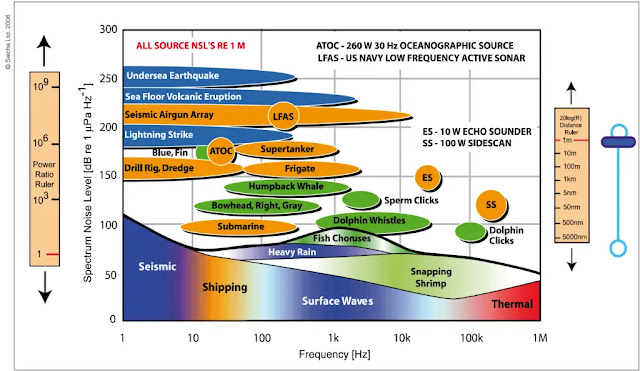
![Illustration 6 – Soviet sailors friendly salute a Lockheed P2V Neptune flying over a non-allied submarine [30]. Illustration 6 – Soviet sailors friendly salute a Lockheed P2V Neptune flying over a non-allied submarine [30].](https://blogger.googleusercontent.com/img/b/R29vZ2xl/AVvXsEgpkWKjmg3DxsuepFmXHvrKtdCiTWSBvtiyZD4jhiI50vUPZKWQmQbt3VEPbSQEfh2y4k6z8F5rvwRSdGS-GqgFksIzz0aFDi2n14PnMiqKM_sC_9ITfQNxfm6N7ONQbPmozS_3nbCqPD0HTbkZGxmf_ewgrN-AgB67w05JozQ4bJvQhs1sIg/w640-h426/Ilustraci%C3%B3n%206%20%E2%80%93%20Marinos%20sovi%C3%A9ticos%20saludan%20amigablemente%20a%20un%20Lockheed%20P2V%20Neptune%20sobrevolando%20un%20submarino%20no%20aliado%20%5B30%5D.webp)

![Illustration 8 – Atlantic coverage of the SOSUS system between the years 1958 and 1978 [47]. Illustration 8 – Atlantic coverage of the SOSUS system between the years 1958 and 1978 [47].](https://blogger.googleusercontent.com/img/b/R29vZ2xl/AVvXsEg12TbNMT565S_2cHzpDKK3h-2gnV358wYumJa3xGNvCueL73jyY_sXlvC39SO4U5ObW7NH8AchAJiMsTKgxSzlL9Mr9OhcuZ-LqiQqDdxCQQEbpn4bFo7X5753hfKMKuOA82lzqnqNJ9HAC9IX-FBYs39Orvgkr2gyevymF6QZVOV6Hg5SiA/w640-h418/Ilustraci%C3%B3n%208%20%E2%80%93%20Cobertura%20atl%C3%A1ntica%20del%20sistema%20SOSUS%20entre%20los%20a%C3%B1os%201958%20y%201978%20%5B47%5D.webp)
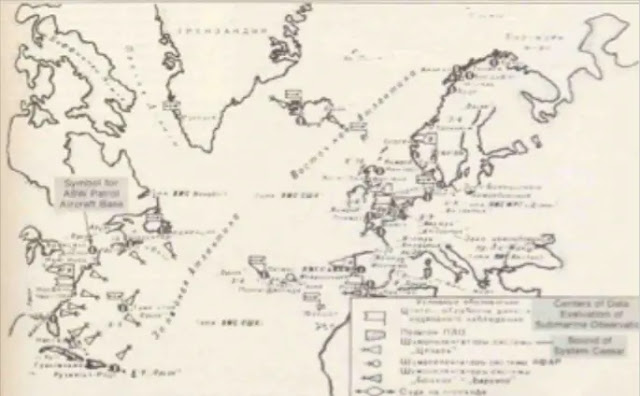
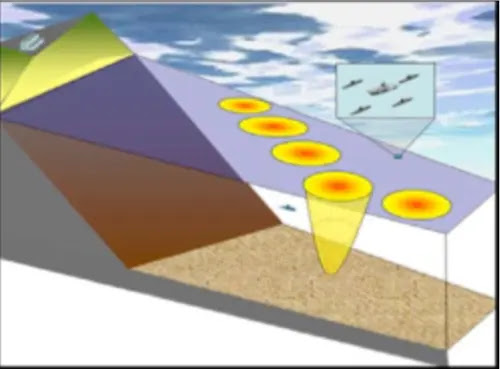

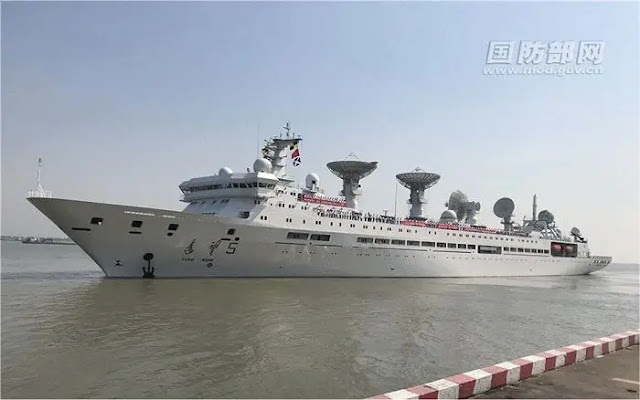

![Illustration 14 – Area of maritime interest for Australia [2]: Illustration 14 – Area of maritime interest for Australia [2]:](https://blogger.googleusercontent.com/img/b/R29vZ2xl/AVvXsEjNPUYEEwCcYdns7g1xrsfQw9k6dHiSahciItIPOyRtdz27lQw6G-WFuY-3nPs2Ps5sIdijKCd1E0-DUHR6M5TOfhsn6MNXEmbpaXsBQD2bnONaVcdaTENJkiCjB_FgT9STEOPPdA3nkY-yYAm2xE8cQXLrgb4ZbyamuwkgBnTopwTITmdMMQ/w640-h586/Ilustraci%C3%B3n%2014%20%E2%80%93%20%C3%81rea%20de%20inter%C3%A9s%20mar%C3%ADtimo%20para%20Australia%20%5B2%5D.webp)

%20de%20la%20clase%20Victorious%20en%20dique%20seco%20en%20Yokosuka%20(Jap%C3%B3n).%20Obs%C3%A9rvese%20la%20peculiar%20forma%20de%20la.webp)



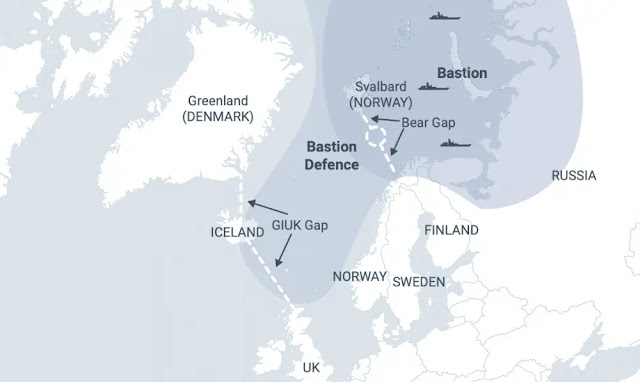


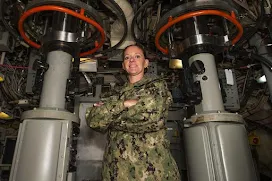









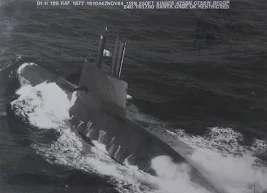


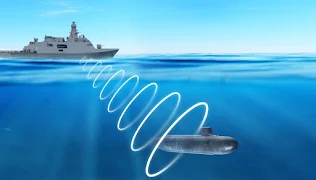
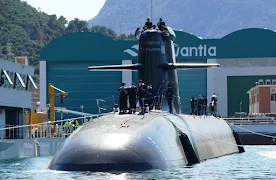


COMMENTS